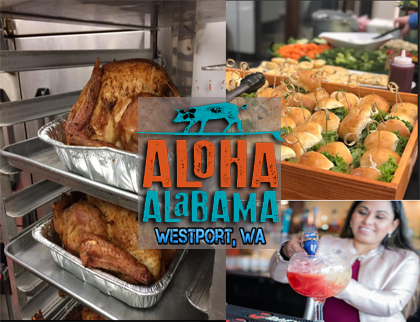Grays Harbor County Division of Environmental Health has changed their format for releasing Restaurant/Health inspections. They now have a searchable database that does show the most recent inspections and we here at GHScanner have gone through those to make this "Recent Grays Harbor Resturaunt Inspections ".
Please keep in mind, these reports are just being made public and most establishments have most likely already corrected most issues that they faced. This is all the information we are provided with, so please do not ask much more as far as what the violations were for etc... For more information you can contact the Grays Harbor County Division of Environmental Health at (360) 249-4222 or
Before making judgment on any violations, we encourage our readers to follow up with and check out the actual violations.
Below is listed any restaurants and their violations for any that have exceeded 25 red points during the time period we searched.
Pacific Beach Fresh Foods, LLC 224 Market St Pacific Beach, WA 98571
55 Red Points - Shellstock (oysters and clams) observed without any date marking on tags. Sausage gravy was found in the walk-in cooler with signs of improper cooling. Chicken wings found at 127°F in the hot case.
Dairy Queen-Simpson Ave 1800 Simpson Ave Aberdeen, WA 98520
3 Blue 25 Red Points - A food employee observed putting on gloves to work with RTE food after hands were contaminated without washing hands. Food worker used sanitizer solution to clean counter, then made a soft serve ice cream cone without washing hands in between tasks. Establishment has accumulations of dirt, grime, and/or debris.
The Siren Oceanside Steakhouse 421 E Neddie Rose Dr Westport, WA 98595
35 Red Points - No Person-In-Charge (PIC) present at the facility during inspection. Employees working without a valid Washington State Food Worker Card. Cooked chicken was found cooling in the prep reach-in refrigerator at 80°F. Cooked pasta was initially cooled in 60°F water in the prep sink, then transferred to a large bowl, covered with plastic wrap, and placed in the walk-in refrigerator. The internal temperature of the pasta was not measured before transfer. The pasta noodles were sitting at 58°F in the walk-in fridge. Cooked sliced potatoes were transferred directly into plastic Cambro containers with lids and placed in the walk-in refrigerator. The depth of the potatoes was approximately 4-6 inches and the temperature was measured at 65°F. Potatoes were cooked approximately 1 hour prior to observation.

About The Inspections
These establishments include restaurants, food and espresso carts, coffee places, delis, the fresh food sections in grocery stores, temporary events where food is sold, and more.
There are nearly 500 permitted food service establishments in Grays Harbor County. The majority of these establishments have two unannounced inspections per year. Some food service establishments will receive at least one unannounced inspection annually and any restaurant may request a special educational session.
The purpose of the inspections is to assure that the food is being handled properly from preparation through serving. Inspectors observe kitchen workers' food handling practices, assure equipment is working properly, take food temperatures, inspect refrigerators and storage areas, assure water temperatures, and correct level and use of sanitizers. Any problem found is written up, and the manager is taught the correct procedure or method immediately.
There are two types of violations recorded on the inspection report.
"Red critical violations" are those food handling practices that, when not done properly, are most likely to lead to food borne illnesses. These food handling practices include:
- controlling temperature, such as cooking meats to the right temperature to kill food borne disease germs, keeping food hot enough until it is served, and keeping food cold enough
- cooling food properly, washing hands, and using utensils instead of bare hands on "ready to eat" food
- storing food
- serving practices
"Blue violations" are primarily maintenance and sanitation issues that are not likely to be the cause of a food borne illness.
Each violation has a numerical value based on its risk of foodborne illness. Therefore, there are more points given for red critical violations than for blue violations. Whenever possible, violations found during the inspection are corrected immediately. Red critical items found during the inspection must be corrected immediately. Examples would be re-heating a food to 165° F, putting it into the refrigerator or discarding the food.





